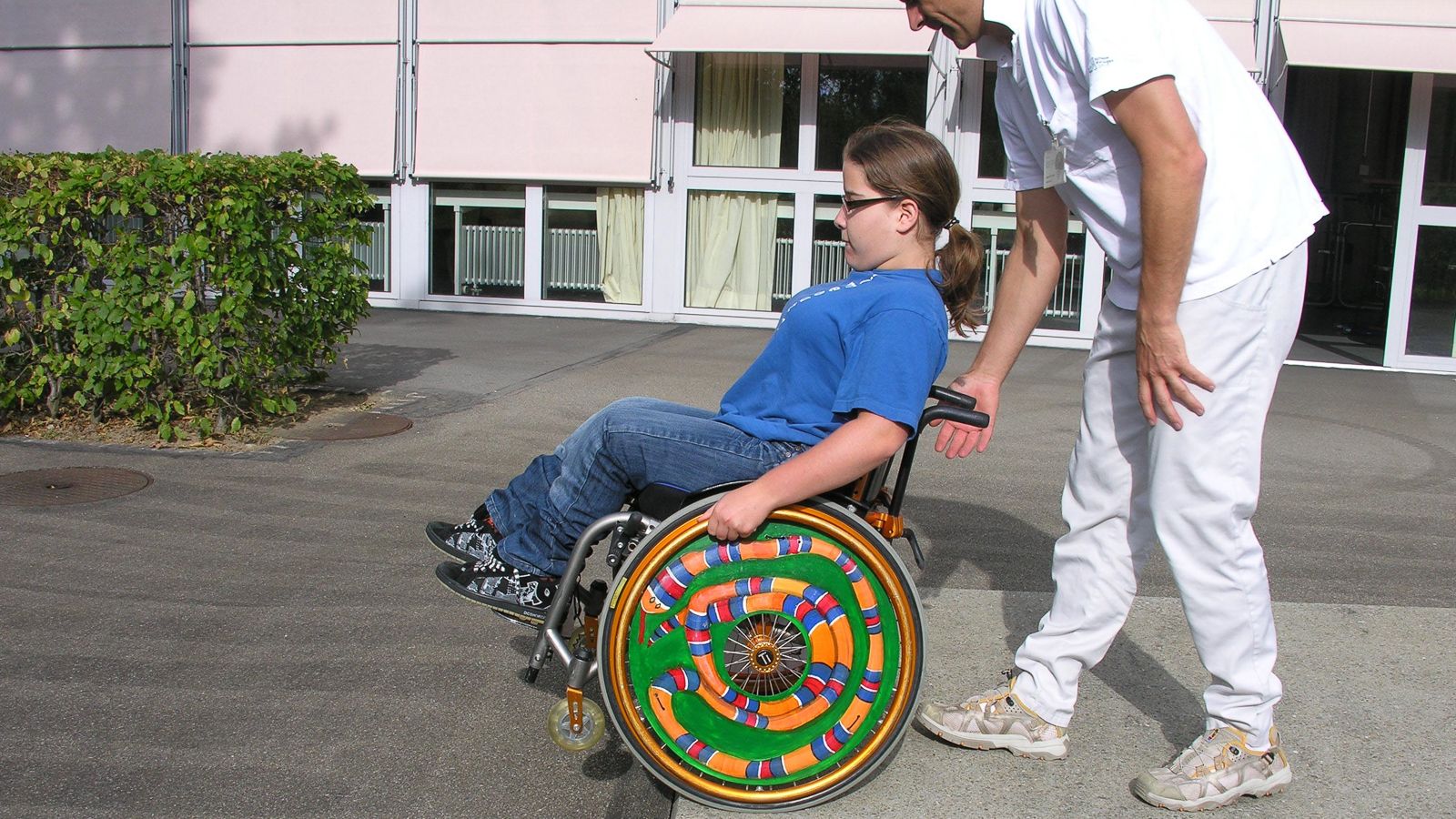Gabi's Story

Born with spina bifida, Gabi's paraplegia at the 3rd lumbar vertebra with American Spinal Injury Association (ASIA) Impairment Scale grade A means that she has loss of sensory and motor function in her hip and legs, and impaired bowel and bladder functioning. She is also a wheelchair user.
Medically, she had had problems with a number of secondary and/or related health conditions, most of which were treated successfully. At the age of three, Gabi was diagnosed with Chiari II malformation (see box 1), and she required a shunt to treat both the hydrocephalus and the mild neurological deficits that it caused. When she was 8 years old, she suffered from epileptic seizures, that were successfully treated with medication. Since the age of ten, Gabi has been seizure-free without medication.
Also at ten years of age, Gabi began to experience luxations of the hip joint (i.e. dislocation of the bone from the joint){cs13-fn14}, and she developed scoliosis (i.e. an abnormal side-to-side curving of the spine).{cs13-fn14} The scoliosis decreased her respiratory functions among other things. Both problems were treated surgically, and Gabi’s spine was fixed from the 4th thoracic level (breast area) to the 1st sacral level (bottom) of the spine, greatly limiting her available range of motion and mobility.
Moreover, Gabi suffered from a number of accompanying disorders. These included autonomic dysregulation of bowel and bladder, sexual dysfunction and short-sightedness.
Over the years of living with spina bifida, Gabi had come to view her health condition as both normal as well as limiting. Although she has only ever known life with specific limitations posed by the spina bifida, she has discovered that peers without disabilities experience limitations in their lives as well. Thus, living with limitations is normal.
With regard to school education, Gabi had been enrolled in regular public schools, where most of her peers did not have a disability.
Gabi lived at home with a supportive family that included an older brother and sister. Like other teenagers, she was social, often meeting friends from swimming and unihockey clubs for persons with disabilities. She even took part in swimming and unihockey competitions. Gabi also enjoyed painting, reading, listening to music and playing the flute, and like all teenagers, communicating with friends via text messages. It is important to note that Gabi’s closest friends were other teenagers with disabilities, who were not peers from school.
""Over the years of living with spina bifida, Gabi had come to view her health condition as both normal as well as limiting.""
For Gabi at the time, there were two outstanding problems in her life – dependency on others and peer relationships.
I can’t move because of the plate in my back. And I can’t even put on pants by myself after using the toilet…every time I have to go, someone has to accompany me."
I have to say that I’m much more open and happy to be around others in wheelchairs.
School is one of my biggest problems…sometimes it is really depressing. I am always reminded that I am not the same as the others. I have to admit that I haven't felt like learning anymore in this environment.
Gabi on living with spina bifida
Due to continued functioning limitations Gabi had been experiencing, her health insurance agreed to pay for a three-week intensive inpatient rehabilitation programme specifically created for adolescents with spinal cord disorders/injuries. The explicit goal of this specialised rehabilitation programme was to increase the independence of adolescents with congenital or traumatic spinal cord injuries – a programme well-suited to Gabi’s needs.